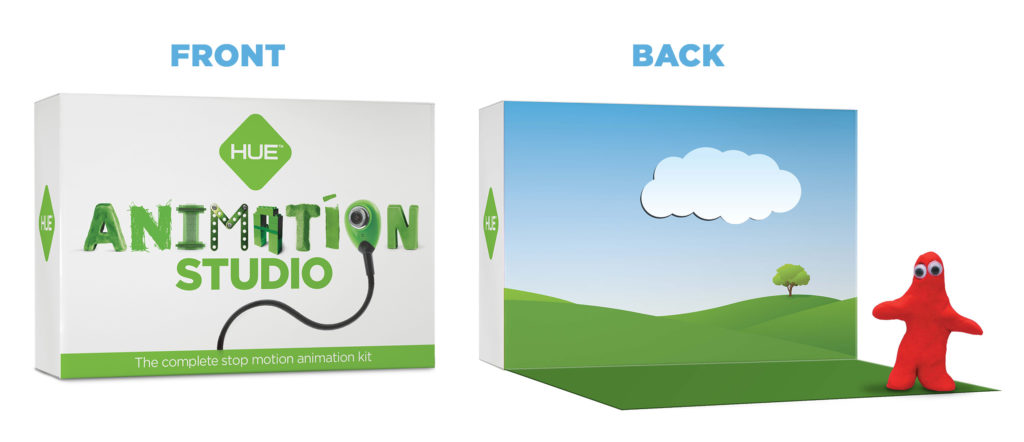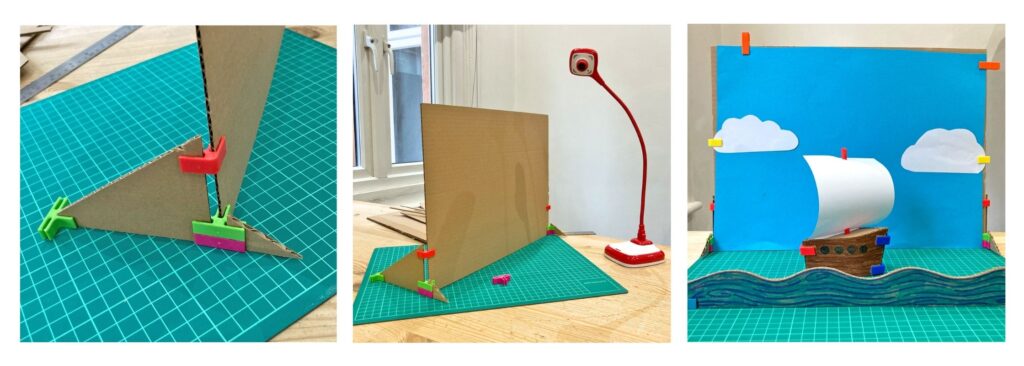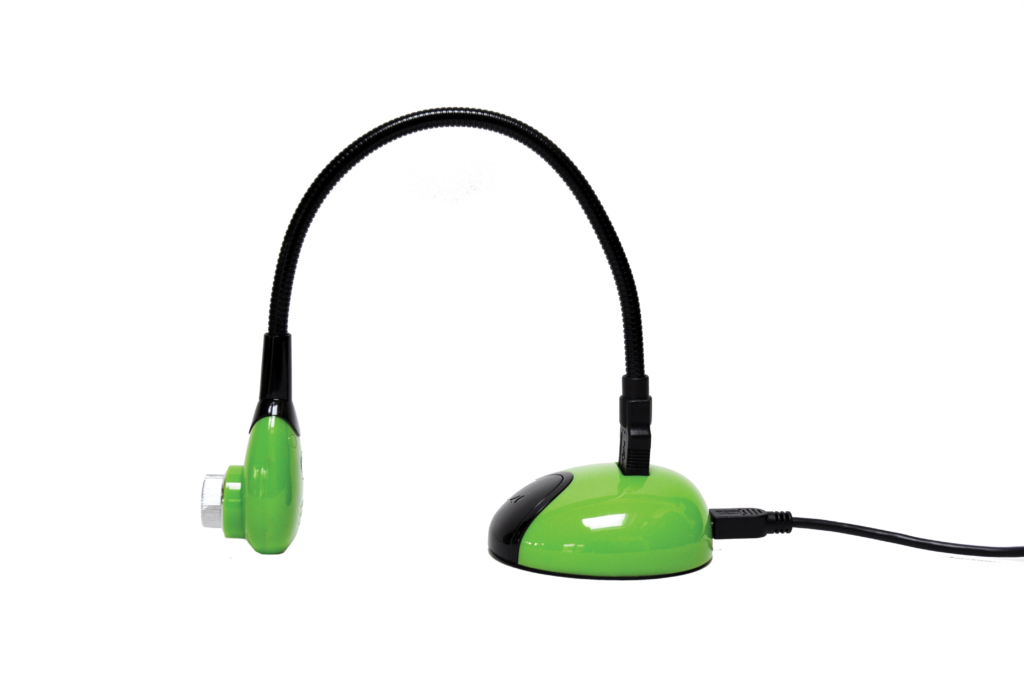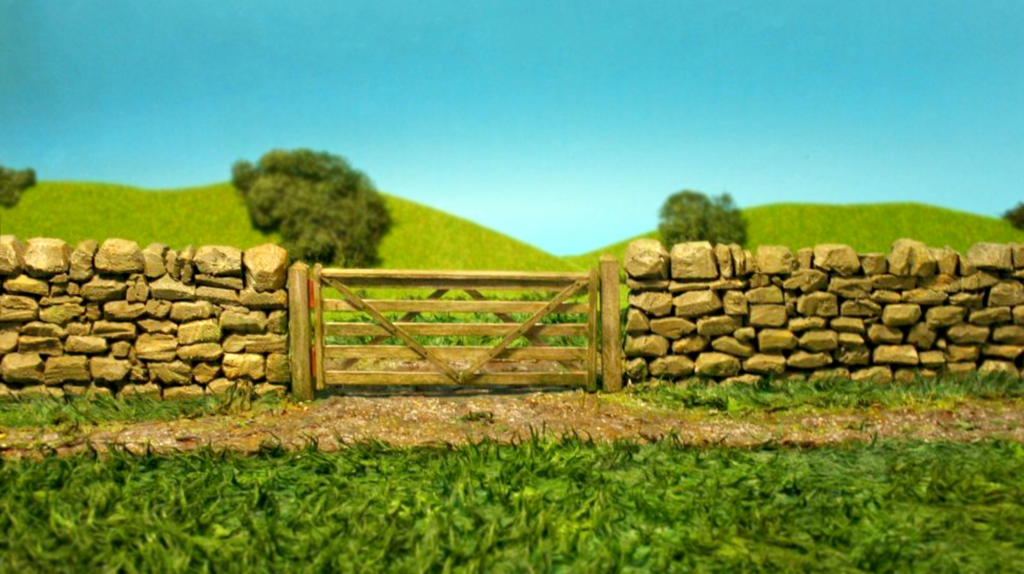
If you own HUE Animation Studio, you can find a ready-made animation stage on the back of the box, and you can download additional illustrated backgrounds from your online HUE account.

Of course, it is so much more fun to make your own customized backgrounds.
Before you start creating your backgrounds and set pieces, make a storyboard to plan what is going to happen in your movie. Once you have planned your movie you might find that you don’t need to build as many things as you first thought. You might not need to make a set at all depending on the idea.
Decide what type of stop motion animation you want to use to tell your story: 2D or 3D, paper cut-outs or claymation, LEGO® or pixilation?
The method, medium and style you choose to make your movie with will affect the type of background, set pieces and props you will need. Find out more about different types of animation in our handy guide: stop motion techniques for beginners.
Then, think about scale. If you want to film a wide shot of a boat sailing on the sea, you could save a lot of time and materials by making the background and boat for that scene quite small.
If you cut to a close up of the pirate on the ship, you might only need to make a small part of the boat and a small section of one of the sails. This is one reason why storyboarding is so important.

Create a mood board of colors, shapes and materials and think about how each element could contribute to the mood of your movie. Decide whether you want to go for a realistic or highly stylized look. Using different textures, like vegetables for trees, mixed or single media can all be very effective.
The simplest setup for creating a background is to use a large sheet of paper, thin card or a printed image taped to a wall.
If you don’t want to put tape on your walls, there are plenty of other ways you can prop up your background. You could buy a table top background stand or desk divider clamps, use 3Dux connectors, or you could tape the paper sheet to a cardboard box instead.

2D cut-out animation
One technique is to tape the background to a tabletop and shoot your animation in bird’s eye view from above. This type of filming is ideal for animating 2D characters and cut-outs, as well as for tricking a viewer into thinking that the stars of your movie are flying through the air.

3D puppet, LEGO® and clay animation
Turning the head of your HUE camera upside down is the best way to shoot animation low to the ground. All good animation software, such as HUE Animation and Stop Motion Studio, will have a feature that will enable you to flip the image back the right way around.

To make a simple set for your puppets and clay characters, you can use a large cardboard box. Cut away some of the panels leaving a base, background and side supports.

Materials
Stop motion sets can be – and often are – created from items commonly found around the house, or from your local Michaels or other art, craft and hobby stores.
There are endless possibilities for the types of materials you could use but some useful items to keep in your animation toolkit include:
- Found objects
- Toys
- Doll houses
- LEGO®
- Model railway scenery
- Printed photographs
- Foamboard
- Cardboard
- Polystyrene
- Felt or sheet fabric
- Pompoms, yarn, string and thread
- Paint
- Plaster of Paris
- Modeling clay
- Cotton wool for clouds
- Dried flowers for trees and foliage
- Dried beans or pasta
- Homemade modeling dough (made from flour, water and salt)
- Paper clips, butterfly/split pins
- Buttons
- Balsa wood
- Popsicle sticks and wooden coffee stirrers
- Tape, sticky-tack and glue
- Items that would otherwise be put in the trash or recycling (e.g. bottle caps, empty kitchen paper rolls, packaging, old magazines and newspapers)
- Teifoc building bricks
- 3Dux cardboard architectural modeling sets

In this stop motion animation set, the sky is made from a sheet of blue paper, the grass is painted fake fur, the gate is made from balsa wood and coffee stirrers and the trees on the hill are made from lichen moss.
Tips
Find somewhere you can assemble your set that won’t be disturbed by other people while you are animating. If you have planned an ambitious project, you might need to leave your set up for a few days or even longer.
Instead of gluing all your background and set pieces together, use sticky-tack where you can so you can move, rearrange or animate elements in the scene (e.g. cardboard clouds moving across the sky).
If you are building a set out of a cardboard box, cut away some of the side flaps so you have enough room to reach in and animate your characters easily.
Make sure your set pieces and your camera are secured to a wall or tabletop with tape or sticky-tack. This will stop the background and camera from accidentally moving around while you are animating.
One of the joys of stop motion animation is problem solving and finding ways to achieve your goals, so free your imagination, get creative and above all else, have fun with your animation adventures!
Animation inspiration
Useful links and websites
Stop Motion Puppet and Clay Facebook Group
StopMotionAnimation.com
Animation Supplies
Animation Toolkit
Chromacolour Art Supplies
